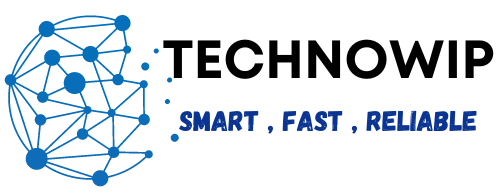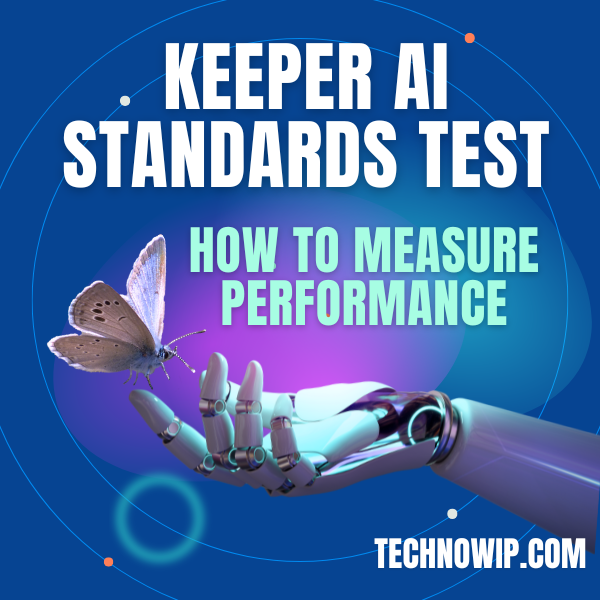Introduction
Artificial intelligence (AI) systems must ensure consistent performance across different models in order to function responsibly when deployed into sensitive fields such as healthcare, finance and public policy – where even minor performance issues could have major ramifications. As part of that responsibility comes rigorous testing using frameworks like Keeper AI Standards Test; in this article I take an in-depth look at why and how this test measures AI performance effectively – let’s dive in!
1. What Is the Keeper AI Standards Test?
The Keeper AI Standards Test is an in-depth framework developed to assess AI systems’ performance, fairness, scalability, reliability and regulatory framework compliance. Unlike traditional software testing practices, however, the Keeper AI Standards Test takes an AI-specific approach and specifically addresses any special considerations associated with it – it aims to ensure AI models are reliable, free from bias, compliant with regulatory frameworks and meet compliance obligations.
- Holistic Evaluation: It evaluates an AI across several dimensions, such as accuracy, efficiency, bias mitigation and scalability. Industry-Specific Adaptability: Although the core principles remain the same, tests can be tailored specifically for particular industries (e.g. healthcare or finance).
- Continuous Improvement: Results from tests provide actionable insights that enable developers to optimize AI.
- The Keeper AI Standards Test encourages accountability within AI systems by offering users insight into not only how an AI performs but also its decision making processes and approaches. This transparency fosters trust with end-users and businesses so that AI may be relied upon for critical applications.
2. Why Is Measuring AI Performance Important?
Measuring AI performance ensures models produce consistent, reliable outcomes that comply with standards set for them – this ensures any flaws or biases have no lasting consequences that negatively affect decision-making processes. Measuring AI performance entails multiple benefits:
1. Mitigating Risks
- Artificial intelligence systems play a pivotal role in many industries – healthcare being no exception – from misdiagnosing conditions to inaccurate credit assessments in finance.
- Regular evaluation of AI systems helps organizations mitigate these risks and avoid costly failures.
2. Meeting Compliance Standards
- Governments and regulatory bodies are setting forth strict regulations regarding AI development and deployment.
- Keeper AI Standards Test ensures models align with these regulations to minimize legal risks for government-issued AI models.
3. Optimizing Operations
- AI systems with strong performance capabilities can automate processes more effectively and deliver exceptional customer service, leading to increased productivity and decreased costs through reduced human intervention and operational savings.
Testing AI early and often is often key in avoiding future headaches. Models I have worked on tend to benefit from incremental refinements rather than waiting until major performance issues emerge.
3. Key Parameters Assessed in Keeper AI Standards Test
The Keeper AI Standards Test assesses several essential parameters in an AI model’s structure in order to guarantee its robustness, scalability, and fairness – here are the most critical ones:
1. Accuracy
- Accuracy measures how closely an AI system’s predictions or outputs match actual outcomes, making high accuracy especially crucial in industries like healthcare where predictions could impact patient care outcomes. Precision, recall and F1 scores are commonly used as metrics of accuracy assessment.
2. Fairness
- Fairness examines whether an AI treats all users or groups equally without bias. For example, loan approval.
- AI should not unfairly reject applicants based on gender or ethnicity alone. By detecting and mitigating bias within an AI system, its ethics remain ethical as it complies with industry regulations.
3. Scalability
- Scalability ensures that an AI solution can handle increasing volumes and requests without degradation in performance, an essential requirement for companies expanding operations with AI solutions.
4. Transparency
- Transparency refers to how easily developers and stakeholders are able to understand an artificial intelligence (AI) model’s inner workings. Explainable
- AI tools allow organizations to track where decisions come from in real time ensuring accountability of system.
4. Steps Involved in Conducting a Keeper AI Standards Test
Keeper AI Standards Test should follow several well-outlined steps, so organizations can ensure their AI models comply with established benchmarks:
1. Define Objectives Clearly
- Outline what the AI should accomplish (e.g., improve customer experiences or automate decision-making processes).
- Clear objectives help align testing efforts with organization-wide business goals and priorities.
2. Select Key Metrics
- Choose relevant metrics to gauge performance of an AI application – precision, recall accuracy and latency are commonly employed performance measures; others could include precision recall accuracy latency etc. Once chosen the metrics should meet both technical and business goals.
3. Run Benchmark Tests
- Utilize real-world datasets to assess how well an AI model performs, using benchmarking as an essential way of comparing its effectiveness against industry standards or other models.

4. Analyze Test Results
- Generate detailed reports detailing strengths and weaknesses across key parameters to inform any necessary changes for optimization or other purposes.
5. Iterate and Improve
- AI models need continuous optimization – use insights gained during tests to fine-tune your algorithm and increase performance over time.
Experience has taught me that fine-tuning after each test is key for optimizing AI systems, particularly complex AI ones. Even minor tweaks can greatly increase performance.
5. Common Issues Identified in AI Performance Tests
AI models frequently encounter issues during performance testing. Here are the five most prevalent challenges identified by Keeper AI Standards Test:
1. Overfitting
- This issue occurs when AI performs well on training data but doesn’t adapt well when faced with new data sources.
- Overfitting is a common problem and may be solved using larger datasets or regularization techniques to increase diversity in training data sets or regularize algorithms.
2. Bias in Data
- When an AI model contains bias in training data sets, its output could lead to unfair results that go against its objectives.
- Bias detection tools in the Keeper AI Standards Test help identify and address bias issues early.
3. Latency Issues
- AI models with excessive latency take too long to generate outputs, making real-time applications inefficient.
- Testing ensures models operate within acceptable response times.
4. Model Drift
- Model drift occurs when an artificial intelligence’s performance gradually deteriorates over time due to changing real-world conditions, prompting ongoing monitoring and training programs to keep its performance optimized. Keeping track of model drift requires continuous oversight.
6. Best Practices for Achieving High AI Standards
Organizations who implement best practices in AI performance testing are more likely to create reliable models. Here are a few proven strategies:
1. Conduct Regular Testing and Monitoring
- Routine evaluations ensure your AI model remains aligned with business needs.
2. Use Diverse Data Sets for Training
- Including diverse data sources reduces bias and promotes generalization, while investing in explainable AI Tools makes understanding its decisions and transparency simpler for the end-users.
3. Establish AI Governance Policies
Organizations should create governance frameworks to align AI systems with ethical and regulatory requirements.
Governance policies have helped save me from potential regulatory issues on multiple occasions. With clear guidelines in place, it makes staying on the side of compliance much simpler.
7. Case Study: Fintech Company and the Keeper AI Standards Test
One fintech company implemented Keeper AI Standards Test in their loan approval system in order to address some problems they were encountering with certain demographic groups being unfairly rejected as potential loan borrowers by its AI model. Here’s how this helped:
- Initially they faced allegations that its AI model had unfairly rejected certain demographic groups but this test has proved its usefulness by helping ensure fair decisions are being made. Here is their story as part of it all unfolds.
- Solution: The Keeper AI Standards Test was instrumental in uncovering any biases within their model, enabling the company to modify it and increase customer satisfaction by 20% as they aligned themselves with regulatory compliance standards and avoid regulatory penalties.
- Result: Customer loyalty increased exponentially while regulatory penalties were avoided as compliance standards were adhered to.
8. How to Interpret Keeper AI Test Results
- Performance Scores: Metrics like F1 score provide insights into accuracy and precision; Bias Detection Reports provide additional details.
- Scalability Insights: Highlight any unfair treatment within a model’s predictions. Enhancement Areas: For improvement areas and potential opportunities within it.
- Identification of specific tuning changes necessary for optimal performance.
Interpreting results requires more than simply numbers; it requires having an in-depth knowledge of business goals and even small performance dips can have dramatic ramifications for operations.
9. Benefits of Keeper AI Standards Test for Organizations
- Transparent AI systems increase credibility. Reduce Operational Risks: Keeper AI Standard Test can significantly decrease operational risks within organizations.
- Timely performance evaluations help avoid failure. Insights from testing encourage the creation of better AI solutions.
- Support Regulatory Compliance : Ensuring compliance with industry-specific guidelines.
Compliance requires proactive approaches; regular assessments provide the ideal way of detecting potential issues before facing penalties later.
10. Future of AI Performance Testing
- Automated Testing Frameworks:
- Future tests should likely include automated frameworks in order to maintain consistent monitoring.
- Integration with DevOps:
- Testing will form part of continuous development cycles.
- Advanced Bias Detection:
- New tools will facilitate identification and reduction of subtle biases
- Real-time Monitoring:
- AI models will be regularly evaluated to avoid unexpected performance drops
11. Tools for Keeper AI Standards Test
- TensorFlow
- TensorFlow is an open framework used for developing and testing AI models.
- PyTorch
- PyTorch stands out for its flexibility and dynamic computational graphs; great for testing models under various scenarios and environments.
- Scikit-learn
- Scikit-learn offers tools for measuring key performance metrics. Finally, Scikit-learn has prebuilt metrics specifically for model evaluation purposes.
- Ideal for both newcomers and experienced developers alike.
- AWS SageMaker
- AWS SageMaker delivers cloud-based tools for AI model testing and deployment – perfect for running large-scale tests efficiently.
Conclusion: Why the Keeper AI Standards Test Matters
The Keeper AI Standards Test offers organizations an in-depth way to assess and enhance AI performance. By measuring key criteria like accuracy, fairness, scalability and trustworthiness they can create trustworthy AI systems while meeting evolving regulations with regular assessments that enhance operational efficiencies as well as ensure compliance. As AI continues its rapid expansion adoption will become even more imperative – these standards provide businesses with an essential edge on staying competitive in this fast paced marketplace.
FAQs
What Is the Keeper AI Standards Test?
An AI evaluation framework that measures and enhances AI performance.
Why does AI performance evaluation require to be monitored?
Guarantee that the system delivers consistent and precise results.
What parameters is this test evaluating?
Accuracy, fairness, scalability and transparency are four important parameters.
How frequently should AI be tested?
Regular testing should take place, ideally every few months.
What is model drift?
Model drift occurs when an AI model’s performance declines over time.
How can bias in AI be detected?
Bias detection tools are utilized in testing to identify unfair outcomes and ensure fair outcomes are produced.
Which industries could take advantage of AI performance testing?
Healthcare, finance and retail are just three industries among many others that involve consumer purchases.
What is Scalability in Artificial Intelligence (AI)?
AI models should have the capacity to manage growing workloads without experiencing performance degradations.
How does transparency aid AI testing?
By communicating the AI’s decisions clearly to stakeholders, this ensures they understand its decisions.
What does AI performance testing entail in its future development?
Future tests will emphasize automation, real-time monitoring and advanced bias detection tools.

